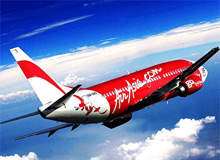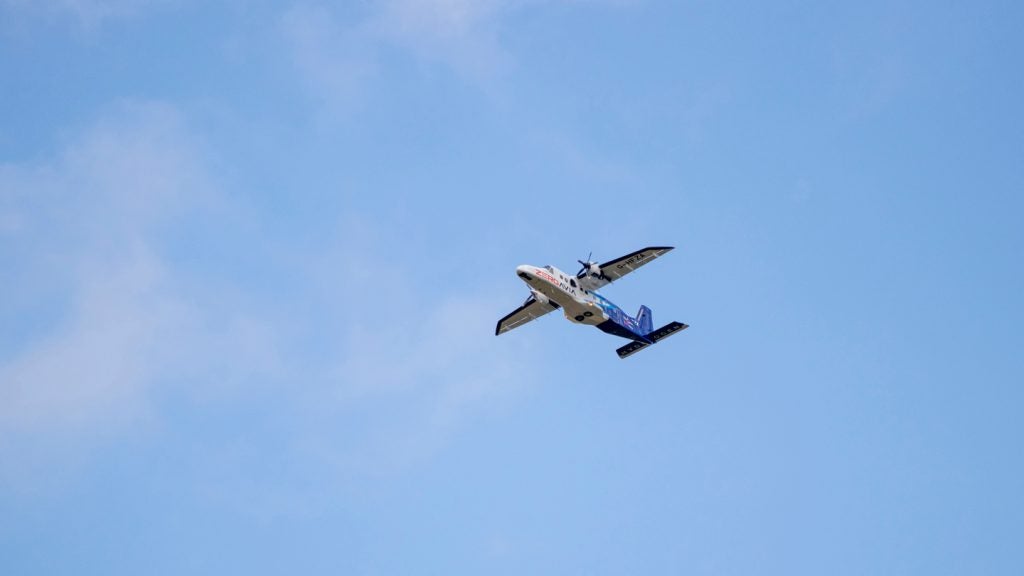
The International Monetary Fund (IMF) has warned that, in 2009, global growth will fall to its lowest level since the Second World War. The organisation is forecasting that the global economy will expand by just 0.5% this year, down from 3.4% in 2008 and 5.2% in 2007. The IMF predicts that growth will rebound to 3% in 2010.
The advanced economies are expected to suffer the biggest setbacks, contracting by 2% this year and growing by just 1% in 2010. By contrast emerging economies will continue to expand, growing by 3.3% in 2009, with growth accelerating to 5% in 2010.
Asia, which has accounted for much of the growth in demand for cargo and passenger air traffic in recent years, will experience contrasting fortunes. While the newly industrialised Asian economies such as Taiwan and Singapore are forecast to shrink by 3.9% this year, developing Asia, which includes China and India, will expand by 5.5%, down from 7.8% in 2008.
The slump in global growth is already having a marked impact on the aviation industry.
In December 2008, global international cargo traffic plummeted by 22.6% compared to December 2007, according to the International Air Transport Association (IATA), while international passenger traffic fell by 4.6%.
The Asia-Pacific region, which accounts for 45% of global cargo, was worst hit with a 26% drop over the past year, reflecting a slump in demand for the region's manufactured goods. North American carriers reported a 22% fall in their cargo business, while European airlines saw a 21.2% decline.
How well do you really know your competitors?
Access the most comprehensive Company Profiles on the market, powered by GlobalData. Save hours of research. Gain competitive edge.

Thank you!
Your download email will arrive shortly
Not ready to buy yet? Download a free sample
We are confident about the unique quality of our Company Profiles. However, we want you to make the most beneficial decision for your business, so we offer a free sample that you can download by submitting the below form
By GlobalDataThis economic backdrop is markedly different from the environment that existed in February 2008, when Airbus drew up its global market forecasts for the aviation industry (2007-2026). However, the long-term trends identified by Airbus still offer a good guide for the industry in 2009.
Key drivers according to Airbus
Certainly, many of the forces that Airbus identified as driving the growth of air traffic will return to the fore when the global economy recovers. These include the following:
- Emerging markets are continuing to grow rapidly, with their economies and demographic developments both driven by and benefiting from air travel.
- Continued global liberalisation is giving greater market access to airlines and wider choice for passengers.
- Low-cost carriers are continuing to grow around the world, but particularly in Asia. The network airlines will benefit from fast-growing international markets, with a wave of new international travel consumers from the emerging countries.
- Changing dynamics, particularly network evolution and the role of megacities and congestion, will influence the future of aviation.
Airbus believes that congestion is becoming a major influence in decisions to the develop airports. Although the global economic downturn may lessen this problem in the short term, it will become a major factor over the long term as air traffic picks up in tandem with the global economy. The approval of a third runway at London Heathrow just this year is a clear example of how travel need is outstripping environmental concern as nations rally to maintain their global footprint through efficient transport methods.
Certainly, congestion is already a problem facing many of the world's major airports. Airbus predicts that any future growth of traffic and frequencies will be an increasing challenge to airport infrastructure and air traffic management.
It adds that "increasing congestion, coupled with the eventual diminishing returns from increased frequencies and the overall growth of the world fleet, has seen the emergence of a clear trend towards larger aircraft." Airbus says that this trend is evident in all seat categories, from smaller regional aircraft to very large aircraft, and will "result in the average aircraft size increasing by as much as 25% over the next 20 years."
Airport upgrades provide engineering boon
The need to build more runways and airport facilities to cope with the increased size of the aircraft using airports, as well as the continuing increases in air traffic passing through these airports, will undoubtedly prove a boon for civil engineering and construction companies.
These companies will benefit from increased spending – not only on airport infrastructure but also on the infrastructure required to service these airports, such as transport links.
Equally, there will be an increase in demand for the services and goods that passengers and cargo require as they pass through airports. This will lead to increased investment in facilities such as hotels, restaurants and shops. The increase in air traffic will also generate growing demand for services such as ground and cargo handling.
Airbus believes that the fastest-growing airports will be found in what it terms hub cities. These cities are: megacities, with populations of over ten million, large centres of operations for particular airlines (such as Frankfurt and Atlanta) and large connecting cities (such as Dubai and Singapore).
These hub cities are also economic, business, population, political, or strategic centres.
According to Airbus, there are currently 32 hub cities around the world, including Tokyo, New York, Paris, Beijing and London. International passenger and cargo traffic is highly concentrated at these global hub cites, with as many as 77% of long-haul passengers wanting to fly to, from or between them. Airbus predicts that these global hub cities will continue to experience high growth in passenger volume.
Airbus adds that connecting traffic will be another source of growth for the hub cities. Interestingly, it adds that many people who could fly directly between two airports prefer to make a connecting flight. There are a number of reasons for this.
Major hub cities can offer a much broader flight schedule than other airports. Passengers may also choose to fly via a hub to take advantage of a stopover, because they prefer the service of an airline operating from these large hub cities, or
simply to exploit a lower ticket price.
"The importance of these major hub cities can be further demonstrated by the fact that 50% of the world's 100 fastest-growing city pairs are between the 32 global hub cities… and almost all others involve a hub at one end or the other," says Airbus.
Expansion in India and China
Airbus expects India and China to experience some of the fastest growth in terms of demand for air travel over the next 20 years. It says that a number of factors will drive this growth, including rapid urbanisation, better jobs in large cities and the absence of established countrywide road transport.
Airbus says that "in the same way that mobile-phone technology leapfrogged the development of land-based telecommunication lines, air transport has been usurping a greater share from road or rail networks." It points out that, while it takes up to 24 hours to travel from Delhi to Mumbai by train, the same journey takes only 90 minutes by plane for the same price.
Both India and China are pressing ahead with massive airport expansion plans despite the global economic slowdown. In fact, both governments believe that increased spending on infrastructure will cushion their economies from falling global growth.
Thus, China has laid out ambitious plans to develop 43 new airports by the end of 2010, with a further 244 coming on stream by 2020. The Indian government plans to have about 500 airports operational by 2020, which would include the redevelopment of currently unused airports. It plans to develop greenfield airports and establish 'merchant' airports dedicated to the movement of cargo and logistics. As of March 2006, India had only 60 airports handling scheduled services.
The Indian civil aviation authorities are also planning to upgrade and modernise a number of airports in the country, with much of the investment focused on the airports in Kolkata, Chennai and Trivandrum.
These plans will provide a bonanza for construction and civil engineering firms. But they will also lead to massive orders for communications and information-technology equipment as governments in both countries install new communication and navigational systems to support air traffic control.
In conclusion, the global economic downturn may well turn out to be the worst that most people alive today have experienced. But it is likely to prove only a short hiatus in the long-term growth of the airline industry, and the next 20 years will see unprecedented opportunities associated with the expansion of the airports that serve that industry.







